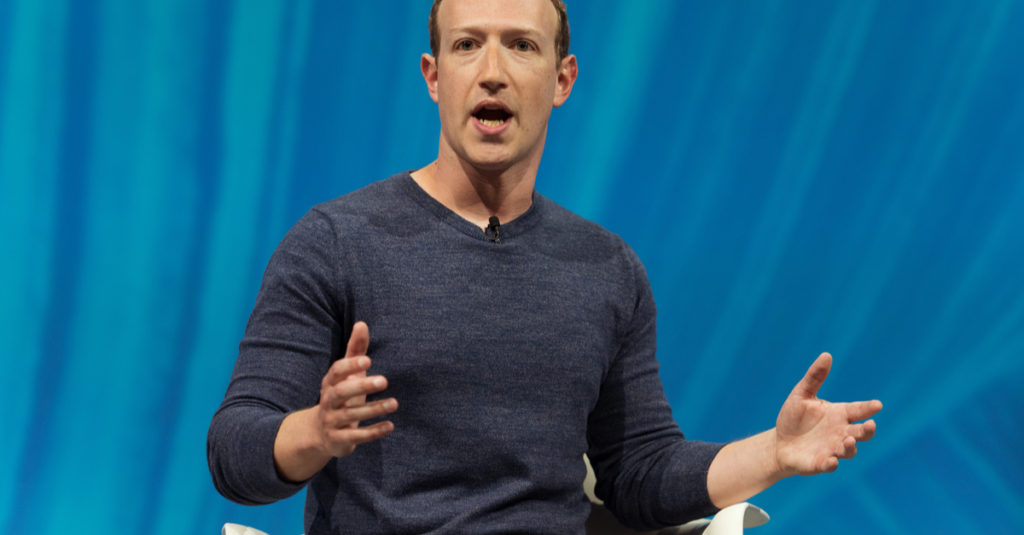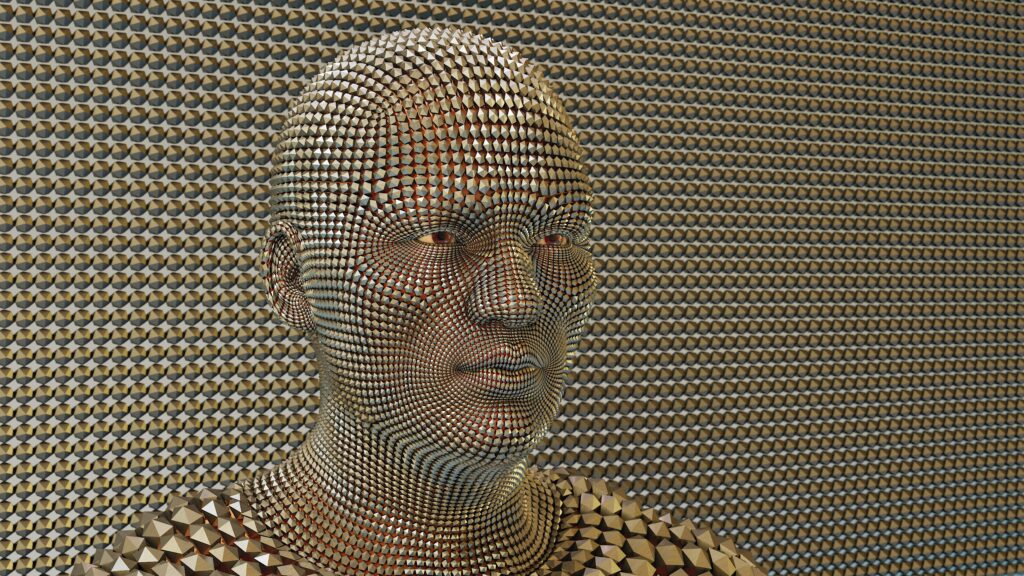Blogger Najm Al-Din says the next big thing in technology – the Metaverse – will tempt many Muslims to abandon their God-given humanity for a synthetic cybernetic existence where we profess Islam but live like “post-Muslims.”
The past three years have offered the world a rare glimpse into what many dubbed “the new normal.”
Since the first lockdown was announced, the governments marching lockstep with unelected bureaucrats at the WEF (World Economic Forum) wasted no time highlighting how successful emergency preparedness rests on the willingness to embrace emerging technologies such as AI and robotics, as we enter The Fourth Industrial Revolution.
The social distancing measures revealed a remote way of doing things which were previously inconceivable. Working from home became a reality for millions, with zoom meetings underscoring company reliance on digital applications.
E-learning forced teachers and students to adapt to new pedagogical realities and whole industries from manufacturing to healthcare addressed the complex challenges by exploring a range of digital engagement strategies.
As novel tech behaviours gradually replaced formerly ingrained habits, an innovation with profound implications on the future of social interactions was unveiled by Facebook CEO Mark Zuckerberg – the metaverse.
Zuckerberg announced that his social media platform would build an interconnected set of real life experiences inspired from the sci-fi realm, known as the Metaverse.
Subscribe to our newsletter and stay updated on the latest news and updates from around the Muslim world!
Envisioned as the Web3 successor to the internet, Zuckerberg gushed about an augmented and virtual reality future which will transition business, social, and cultural life from physical to online environments, enabling activities such as work, shopping, education and travel.
The Metaverse relies on decentralised technologies like blockchain for its data infrastructure and promises to generate a level of embodiment in the virtual space comparable to actual physical presence through the use of haptic rendering and soft robotics which will function as a gateway into the digitised world.
This convergence of physical, augmented, and virtual reality in a shared cyberspace requires users to operate as avatars of themselves, akin to an immersive multiplayer role playing game.
Furthermore, the feature of interoperability will allow users to travel between virtual spaces such as work conferences and cross-platform gaming, permitting participants to use NFTs (Non-Fungible Tokens) to unlock a crypto-economy in the Metaverse that will reimagine every aspect of the consumer experience.
While interest in the Metaverse has recently waned amidst a downturn in investment and other teething issues, Microsoft Teams’ mixed reality project and Apple’s long-awaited entry into the world of AR through Vision Pro proved that the Metaverse was no passing fad, with many tech players now involved in bringing spatial computing to life.
So how do its proponents seek to bring this techno-utopian vision to fruition and make the metaverse the dominant paradigm for human communications?
Digital Twin Technology
While the metaverse is in its infancy, the engine that will power it is digital twin technology.
A digital twin is a virtual model designed to accurately reflect a tangible object, process, service or environment that behaves and looks like its real-life counterpart.
It uses real world data with sensors to create simulations to predict the performance of products or processes and can integrate AI and software analytics to enhance output.
With huge advancements in machine learning, these virtual replicas have become a staple in modern engineering to mitigate risks and drive sustainable innovation and have been dubbed the future of communication and branding.
Avatar
As the Metaverse functions like a parallel world in constant communication with our physical world, it requires a user’s digital representation in cyberspace known as a virtual avatar.
Through Generative AI and advanced neurotechnologies, these computer-generated representations can be customised to make them indistinguishable from humans in many ways such as behaviour and intelligence. Our personalities and mannerisms can be integrated into avatars to mimic human consciousness, thus heralding the rise of autonomous socio-emotional agents.
As fanciful as it sounds, human beings synchronously experiencing a real-time rendered digitally twinned 3D world is something which Silicon Valley behemoths and technocrats at policy level envisage as a viable future, especially in an age where the forever looming threats of climate change, pandemics and war make the possibility of reducing carbon emissions through less resource intensive goods in the virtual world an appealing prospect.
But green platitudes aside, what else may be motivating the architects of the Metaverse to fuel this next wave of radical technological change?
Transhumanism
Zuckerberg joins several tech futurists advocating for a global, trans-national virtual community, held together by a common technological worldview where there is no clear distinction between the real and the virtual world.
They perceive a progression towards transhumanism to be a natural process in the evolution of man, where sweeping modifications to genetics, physiology and neurochemistry via performance enhancing body and brain technology will usher a fundamental alteration of the human species.
Transhumanists yearning for an augmented intelligence include technocratic elites at Davos who are agitating for the Great Reset, as well as Elon Musk, the billionaire entrepreneur and co-founder of Neuralink who is one of the leading advocates of clinical research into implanting AI microchips inside human brains.
By mapping the functionality of a brain onto digital platforms to create a hybrid species, transhumanists anticipate that the world will inch closer to the final frontier in intelligence, culminating in the creation of a new synergy between humans and AI known as the singularity.
Certainly, collective endeavours towards a cyber consciousness through digital twins will confront us with some of the most daunting questions about what it means to be human, and where man ends and machine begins.
So how should Muslims navigate their way through this new digital ecosystem?
The Islamic view
Firstly, it is important to state that cyber-physical systems cannot replicate the complexity of humans as they do not possess the qualitative and subjective aspect of human consciousness which is unique to Allah’s creation.
However, in a future where so much human interaction is expected to take place via augmented reality in simulated environments, living as virtual doppelgangers can distort our understanding of “humanity.”
While many will celebrate this development as a pioneering feat of technology which creates new forms of identity and expression, they considerably blur the line between God-given reality and man-made fiction.
This vision of the future is premised on the belief that mankind cannot progress by becoming more human. Rather, they must trade their deficient humanity for an understanding of man, life and the universe which is filtered through the prism of technology.

While it is crucial for Muslims to harness the potential of technology for God-ordained purposes, what we perceive as tools to increase efficiency and optimisation have a more insidious potential which we risk unleashing unless we acknowledge the following: Technology is not neutral. It shapes values, forms habits and has a specific orientation in which its creators steer users.
The future Metaverse is one where citizens expand their definition of reality by fabricating an alternate existence that mimics physical phenomena with a considerable degree of presence, interaction and intimacy.
In this sense, the metaverse will tempt many to abandon their God-given humanity for a synthetic cybernetic existence in imaginary landscapes with little to no distinction between our sensory perceptions and the digital world, where interacting with our fellow man via cartoonish avatars is perceived as the antidote to the lack of real human connection.
The moment we decide to live inside interchangeable machines and allow AR and VR to permeate every aspect of existence, we risk dehumanising interpersonal relationships and condition the brain to entertain a new definition of “reality.”
However, as much as we may innovate, the creation of Allah can never be abstracted from its physical environment, since physicality is an inescapable feature of the human condition which makes us authentically human.
At the heart of any true communion with Allah and companionship with others is physical presence and embodiedness. However, this cannot thrive if we choose to alienate from our bodies and prioritise depersonalised cybernetic relationships over physical presence, since love, warmth and tenderness can never be reciprocated by coded algorithms.
In its misguided attempt to shape human destiny, the Metaverse emphasises remoteness and disembodiedness as the only pathway to progress. By falling for technology’s false promise of euphoria, we risk sleepwalking into an age where we profess Islam but live like post-Muslims.
























